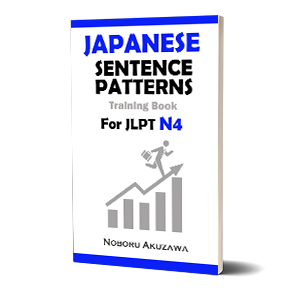Meaning: to be (copula)
Grammar Point: “だ” is a plain form copula, while “です” is its polite counterpart. Both are used to declare states or facts, but “だ” is informal and often appears in casual settings.
A copula is essentially a verb meaning “to be”. It can be used to show identity (Max is a dog), properties (furry), state (happy), and membership in a set (one of my pets). Other verbs, like “become”, “seem”, “feel”, and “appear”, also function much like the main copula.
Forms of “be” English include “is”, “am”, “are”, “was”, “were”, “been”, and “being”. The Japanese copula also has several forms, the most important of which are the plain form だ “da” and the polite form です “desu”.
Formation:
[Plain]: Subject + だ (da)
[Polite]: Subject + です (desu)
日本語 / にほんご / Japanese
(1) 妹は元気だ / 元気です。
(2) 弟は医者だ / 医者です。
(3) 私は日本人だ / 日本人です。
(4) 天気は晴れだ / 晴れです。
(5) 天気は雨だ / 雨です。
(6) 天気は曇りだ / 曇りです。
ことばと表現 / Words & Expressions
日本人【にほんじん nihonjin】Japanese person
天気【てんき tenki】weather
晴れ【はれ hare】sunny; clear weather
雨【あめ ame】rain
曇り【くもり kumori】cloudy
英語 / えいご / English
(1) My younger sister is energetic.
(2) My younger brother is a doctor.
(3) I am Japanese.
(4) The weather is sunny.
(5) The weather is rainy.
(6) The weather is cloudy.
ひらがな / Hiragana
(1) いもうとは げんきだ / げんきです。
(2) おとうとは いしゃだ / いしゃです。
(3) わたしは にほんじんだ / にほんじんです。
(4) てんきは はれだ / はれです。
(5) てんきは あめだ / あめです。
(6) てんきは くもりだ / くもりです。
ローマ字 / Romanji
(1) Imouto wa genki da / genki desu.
(2) Otouto wa isha da / isha desu.
(3) Watashi wa nihonjin da / nihonjin desu.
(4) Tenki wa hare da / hare desu.
(5) Tenki wa ame da / ame desu.
(6) Tenki wa kumori da / kumori desu.




























No comments yet.